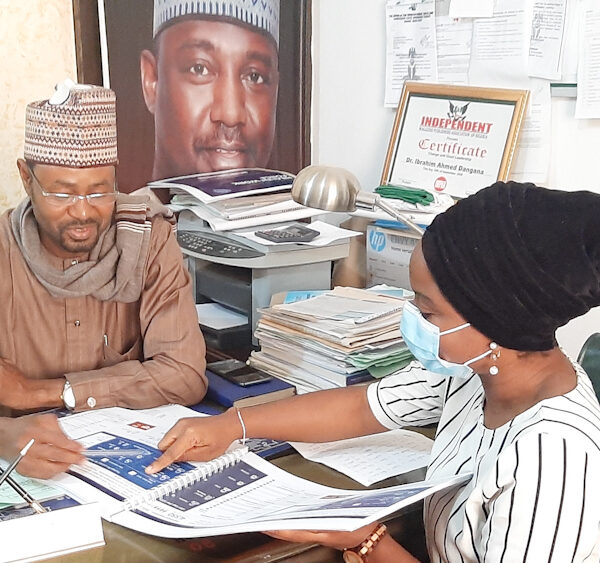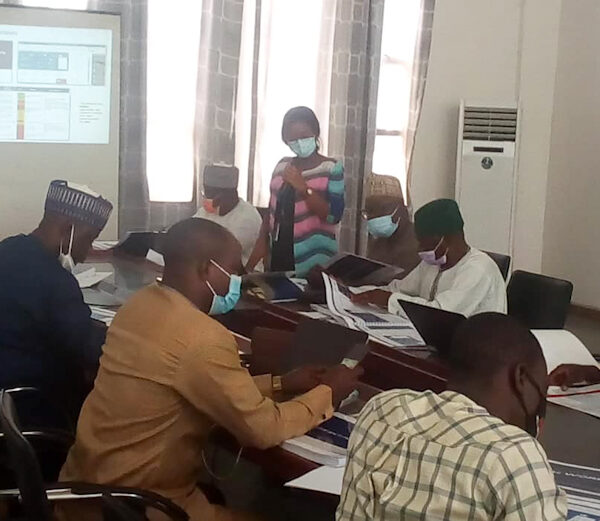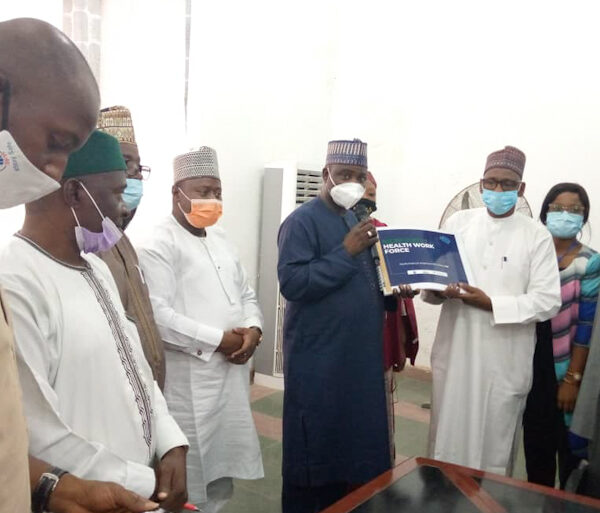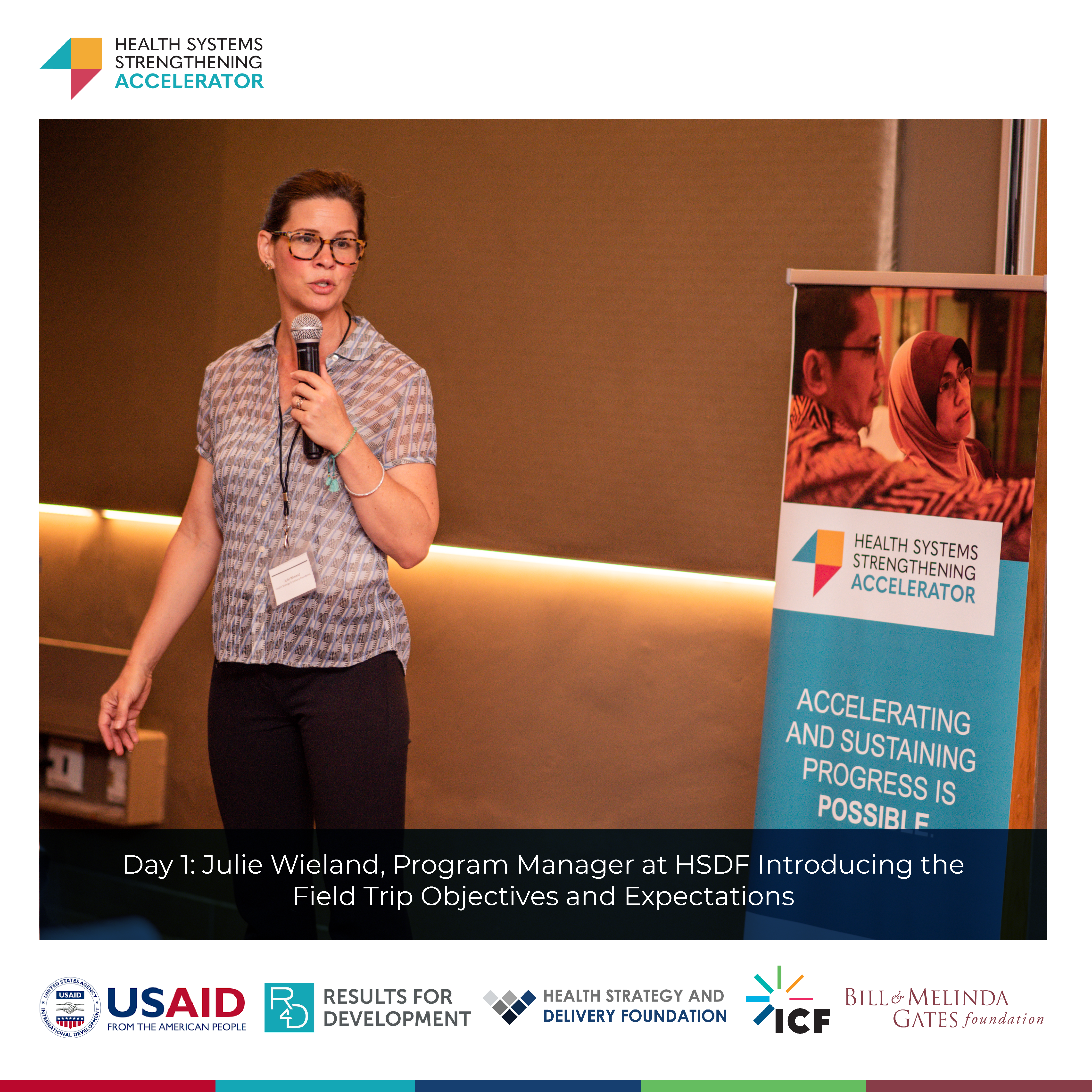HSDF Facilitates the Dissemination of Niger State’s PHC Productivity Improvement Plan and Health Facility Profiles
Health Strategy and Delivery Foundation (HSDF) presented the Niger State Primary Health Care (PHC) Productivity Improvement Plan (PIP) and PHC facility profiles to the Permanent Secretary, Niger State Ministry of Health, Dr. Muhammad Gana, during the first Human Resource for Health Technical Working Group (HRH TWG) meeting of the year, which held on 29th January 2021.
The dissemination meeting held at the conference room of the Niger State Ministry of Health. Also in attendance were senior management officials from the State’s Ministry of Health, Health Management Board, and Niger State Primary Health Care Development Agency, including the Executive Director SPHCDA (ED SPHCDA), Dr. Ibrahim Dangana, Director Planning Research and Statistics, State Primary Health Care Development Agency(DPRS SPHCDA), Dr. Inuwa Junaidu, Director Public Health(DPH), Dr. Ibrahim Idris. Besides, the Dir. Admin(DA), Human Resource for Health Focal Person(HRH FP), Representatives from training institutions, Office of Head of Service, and the Bureau of Statistics were present.
Niger State’s Human Resources for Health (HRH) has been characterized by inadequate staffing. Where available, the health worker’s productivity ultimately determined the quality of care delivered to the patient. Seeking to address these HRH challenges in the state, HSDF supported the state’s health sector to co-develop a five-step approach in optimizing PHC workforce performance and productivity.
In Q4 2019, this partnership conducted the first of the five-step approach to improve Health Work Force (HWF) productivity by carrying out a quantitative PHC HWF productivity study in 274 focal PHCs in the state. Findings from this study revealed three core drivers of low PHC HWF productivity in the state, namely, health system inefficiencies, health worker absenteeism, and low patient demand. These results were used to develop a health facility profile that summarizes study findings per facility. It serves as a reference for showcasing the workforce productivity index, absenteeism rate, HRH gap, HRH trends, and service availability mapping per facility.
As part of the approach, a PHC HWF qualitative study was conducted in Q3 2020 across focal PHCs in the state to identify the underlying causes of low HWF productivity. Findings from this study informed the development of a PHC HWF Productivity Improvement Plan (PIP), which aims to serve as a baseline for HRH planning and management.
PHC is considered a gateway of the health system and as such, must be planned for, managed, and properly governed. HSDF, has worked with the state to co-develop the five-step approach and has co-implemented the various stages of the HWF optimization process. Articulating and implementing these evidence-based strategies for improving PHC HWF productivity will undoubtedly improve the overall quality of care and improve the utilization of the existing workforce in the state.



Recent News
-
Empowering Nations: Safeguarding Blood, Inspiring Change
30 April 2024
Grants and Business Development Specialist
We are seeking a highly motivated and experienced Grants and Business Development Specialist to join our organization. The successful candidate will be responsible for identifying funding opportunities, developing grant proposals, and fostering partnerships with potential donors and stakeholders (regional and global). This role plays a vital part in securing funds and resources to support our organization’s mission and projects.
Apply NowPublic Health Consultant, Guinea
The consultant (working with the Accelerator team) will collect results from the tool, organize a meeting with stakeholders to discuss results from the tool, and produce a report on key findings and recommendations from the tool to be shared publicly.
Apply NowPublic Health Associate, Senegal
We are currently in search of an experienced Public Health professional in Senegal to work on the anticipated Nutrition Capacity Development and Financing Platform and provide technical assistance to elevate nutrition financing and strengthen local capacity to support these efforts. The Associate must be bilingual (English and French).
Apply Now


